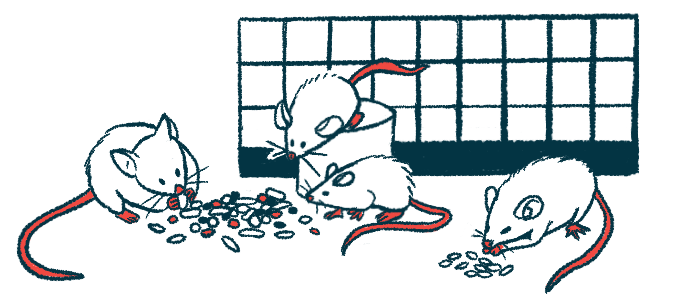NLRP12 protein may be potential target for SCD, lab study finds
Protein seen to act as switch turned on by blood cell destruction
Written by |

A protein called NLRP12 appears to act as a switch that turns on inflammation and tissue damage when it senses free heme, which is released from broken red blood cells during an infection and in other diseases like sickle cell disease (SCD).
This protein could therefore be a potential new treatment target for inflammatory and other diseases characterized by red blood cell destruction, according to a new study that used lab-grown cells and mice.
“The NLR family contains proteins that have been known to be important in disease for years, but what many of these proteins respond to for activation and how this affects pathology [disease mechanisms] has remained a mystery,” Thirumala-Devi Kanneganti, PhD, vice chair in the department of immunology at St. Jude Children’s Research Hospital, in Memphis, Tennessee, and the study lead, said in a press release.
“After a two-decades-long search for the trigger of NLRP12 and the specific signaling pathway it activated, we found that heme, combined with specific components of infection or cellular damage, can activate NLRP12 to drive inflammatory cell death … in disease,” said Kanneganti, who also directs the hospital’s Center of Excellence for Innate Immunity and Inflammation.
The study, “NLRP12-PANoptosome activates PANoptosis and pathology in response to heme and PAMPs,” was published in the journal Cell.
Scientists used cell, mouse models to investigate NLRP12
Infection and other diseases can cause red blood cells to burst open and release a protein called hemoglobin, which usually carries oxygen around the body. When it’s released, hemoglobin breaks down into an iron-containing compound called heme.
In people with SCD, this happens because of a faulty version of the hemoglobin protein. It makes red blood cells take on a sickle-like shape and become more prone to break apart in a process called hemolysis. The misshapen red blood cells also die at a much faster rate than the healthy, rounded ones, which leads to exacerbated symptoms for SCD patients.
Research has long established that free heme can trick immune cells, such as macrophages and other white blood cells, into causing inflammation and tissue damage. How exactly free heme does that, however, hasn’t been fully determined.
“Scientists have known for decades that hemolysis leads to organ damage, but the underlying mechanism driving disease pathology was unclear,” said Balamurugan Sundaram, PhD, one of the researchers in the study.
To get a clearer picture of the mechanism, the team of scientists focused on proteins of the NLR family. These proteins contribute to inflammation, which occurs when chemicals signal the need for the body to mount an immune response to fight off infection or repair damaged tissue.
The team found that the genes encoding NLRP3 and NLRP12, two proteins of the NLR family, were highly active in the monocytes of individuals with SCD. Monocytes are a type of white blood cells that travel through the blood to tissues, where they become macrophages.
In the lab, researchers combined heme with chemicals that signal infection, and were able to trigger the death of lab-grown macrophages.
If the macrophages lacked either NLRP3 or NLRP12, their death could no longer be triggered by the combination of heme and infection signals. However, “loss of NLRP12 provided significantly more protection from cell death,” the researchers wrote.
Additional experiments revealed that NLRP12 recruited other proteins inside macrophages to form a PANoptosome — a complex of proteins that turns on inflammation and tissue damage — that contains several cell death-inducing molecules that also play a role in inflammation.
It also included “the inflammasome as an integral component,” the researchers wrote.
The PANoptosome is triggered when it senses bacteria and other invaders or potential threats, such as free heme.
“Two kinds of signals come into the cell and then NLRP12 engages many other proteins as an organizer to drive cell death,” said Nagakannan Pandian, PhD, another of the study’s authors.
In this study, we identified that NLRP12 could potentially serve as a drug target to decrease disease [mechanisms] during hemolysis, whether from hemolytic or other diseases, because its absence reduced mortality and reduced tissue damage.
Next, researchers turned to a mouse model. The animals were given phenylhydrazine, a chemical that causes hemolysis, in combination with lipopolysaccharide, a bacteria toxin.
Hemolysis caused kidney damage and led to the rapid death of wild-type (control) mice. However, mice genetically engineered to lack NLRP12 did not show as much kidney damage and did not die as fast.
“In this study, we identified that NLRP12 could potentially serve as a drug target to decrease disease pathology during hemolysis, whether from hemolytic or other diseases, because its absence reduced mortality and reduced tissue damage,” Sundaram said.
“These analyses could be extended to other diseases to further understand how therapeutic targeting of NLRP12 or its regulatory pathway could be clinically applicable across the disease spectrum,” the team wrote.






